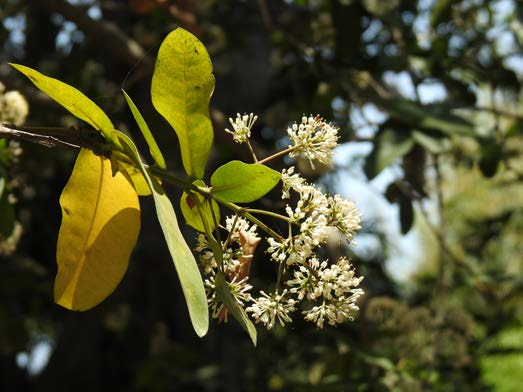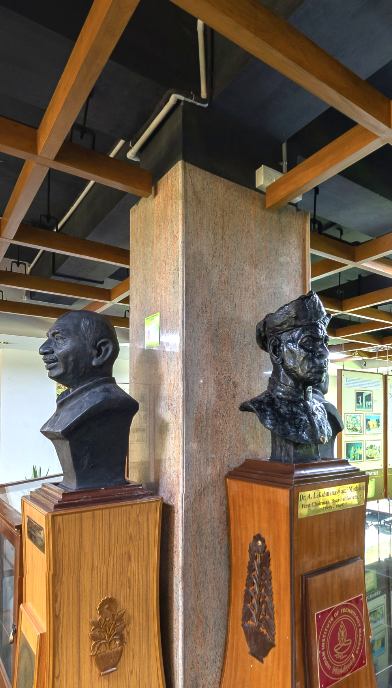
-
A Rare Bloom
Apr 01, 2021
Bhuvanesh Santharam
In the deep, strange-scented shade of the great dark carob tree
I came down the steps with my pitcher
And must wait, must stand and wait, for there he was at the trough before meSnake by D. H. Lawrence

The post-lunch break was often a time for walks outside the Heritage Centre. I liked the idea of filling my lungs with fresh forest air as I walked around the campus. As I was loitering around the parking area outside the Heritage Centre, I caught a whiff of a fragrance. Initially, it was mild, and as I grew more aware of it, it filled my nostrils. It smelt familiar. I looked around and saw that I was standing right under a tree which was around 15-20 feet tall. It had small white flowers, sitting in bunches. The fragrance was not too strong, rather, a modest but admirable one. I borrow D. H. Lawrence’s phrase when I say I stood under the “strange-scented shade” of the mystery tree.

I took a few flowers from their abodes and decided to keep them at my desk until the scent wore off. I remember instances from my childhood (and adult- hood) when my father would return from his bird watching sessions and ask me to close my eyes, while he held a wildflower or two under my nose, which he had picked up on his walk. His palms would be coated with the smell of the flower, quickly dwindling, and I had to smell them as fast as possible before the fragrance wore off completely. The flowers from the tree outside the Heritage Centre had a rather pleasing smell. The flowers themselves were small and white. They smelt tremendously familiar, but I had not even an inkling of a clue as to what flowers they were. Kumaran sir identified the tree as Gorbale (Ixora Brachiata). The tree is a tropical tree typically found in evergreen forests of Southern India. It is called Gorbale in Marathi, Koraji in Kannada, Korvipala or Korivi in Telugu, and Marachekki or Marachethi in Malayalam. The tree belongs to the coffee family Rubiaceae.
One of the features that stood out about the tree (apart from the umbrella of fragrance that it held to anyone who happened to pass under it or anywhere near it) was the fact that the trunk was slanting at almost 50 degrees would be my guess, but again, I am the worst at mathematics, so let us just stick to the medium of Literature and consider the trunk of the tree as ‘slanting’ rather than going into the numerical details of the same. It is not often that the tree blossoms. In fact, there have been suggestions that the flowers bloom just for a single day in a whole year. However, the flowers were present the next day as well, and the fragrance had grown stronger. I wondered if anyone else had noticed the tree’s aromatic gift to the world, given the scores of people that passed across and under it.
It was a refreshing introduction to a tree that I had hardly noticed over the couple of months that I had been here. I could compare it to a person sitting quietly in a classroom or in any social circle, unbeknownst to his/ her/their peers, until the person decided to speak up. Not every interaction is visual, or auditory or olfactory or pertaining to any single sensory organ. In this case, however, the introduction was by olfactory means, wherein I was arrested by the sudden change in the air’s temperament, prompted by the Gorbale’s decision to bloom that day. Perhaps if we decide to use our senses a bit more, we would discover much more than what we think we perceive, in the world outdoors.
Your response to Letter from Heritage Centre is welcome. Please send mail to heritage@iitm.ac.in
The Heritage Centre is located in the ground floor of the Administration Building, IIT Madras. It is open on weekdays from 9.30 am to 5.30 pm.
- Contribute
to the Centre -
Monetary
Support - Digital
Material









